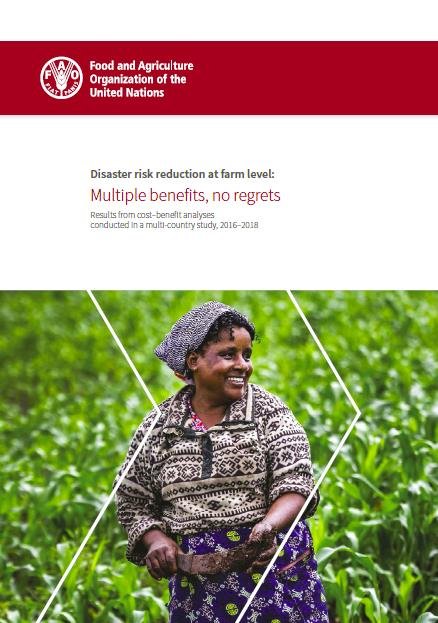- Share this article
- Subscribe to our newsletter
Disaster risk reduction at farm level
The report Disaster risk reduction at farm level: Multiple benefits, no regrets presents results from cost–benefit analyses conducted in a multi-country study from 2016-2018. It was published by the Food and Agriculture Organization of the United Nations (FAO) in May 2019.
The authors assessed over 900 farms in 10 different countries through multi-year trials and found that many of the "disaster-resistant" farming innovations are within easy reach of poor farmers and do not require substantial investment. What is more, these innovations did not merely act as a buffer against disaster damages - in most cases, they significantly improved farm yields and financial gains even in the absence of any natural disasters.
Examples include a range of low-cost options for disaster risk reduction (DRR) that vary from nature-based solutions, such as planting mangrove to protect coastal areas from floods, to the use of flood-resistant rice varieties, to shifting to the installation of rooftop water-collection and irrigation Systems.
In particular, the study reveals that the good practices assessed have considerable potential to reduce the damages wrought on developing world agriculture by smaller-scale, lower-intensity disasters. While capturing less attention than large-scale disasters, hazards like dry spells or cold spells recur more frequently and represent a constant and significant problem for the 2.5 billion people on the planet who rely on small-scale agriculture.
Two paths to upscale disaster risk reduction in agriculture
Greater upfront investment in anticipatory disaster-risk-reduction measures represents a better use of resources than costly post-disaster spending on reconstruction and recovery, the report says, calling for DRR in agriculture to move beyond smaller-scale pilot projects to much wider implementation.
It indicates two main paths to do this. The first is through farmer-to-farmer replication - when farmers in a community or region begin to adopt new techniques after observing the benefits their neighbours gained when doing so. This often requires very little investment or institutional support. The second path is mainstreaming DRR through large-scale efforts in which government and private sector support will be required to promote uptake of good practices at scale.
Crucially, both pathways depend on good infrastructure, adequate investment and an enabling environment. Agricultural development policy, planning and extension work should treat disaster risk reduction as a priority, the report stressed.
(FAO/ile)
Download the report Disaster risk reduction at farm level: Multiple benefits, no regrets: http://www.fao.org/3/ca4429en/CA4429EN.pdf





Add a comment
Be the First to Comment